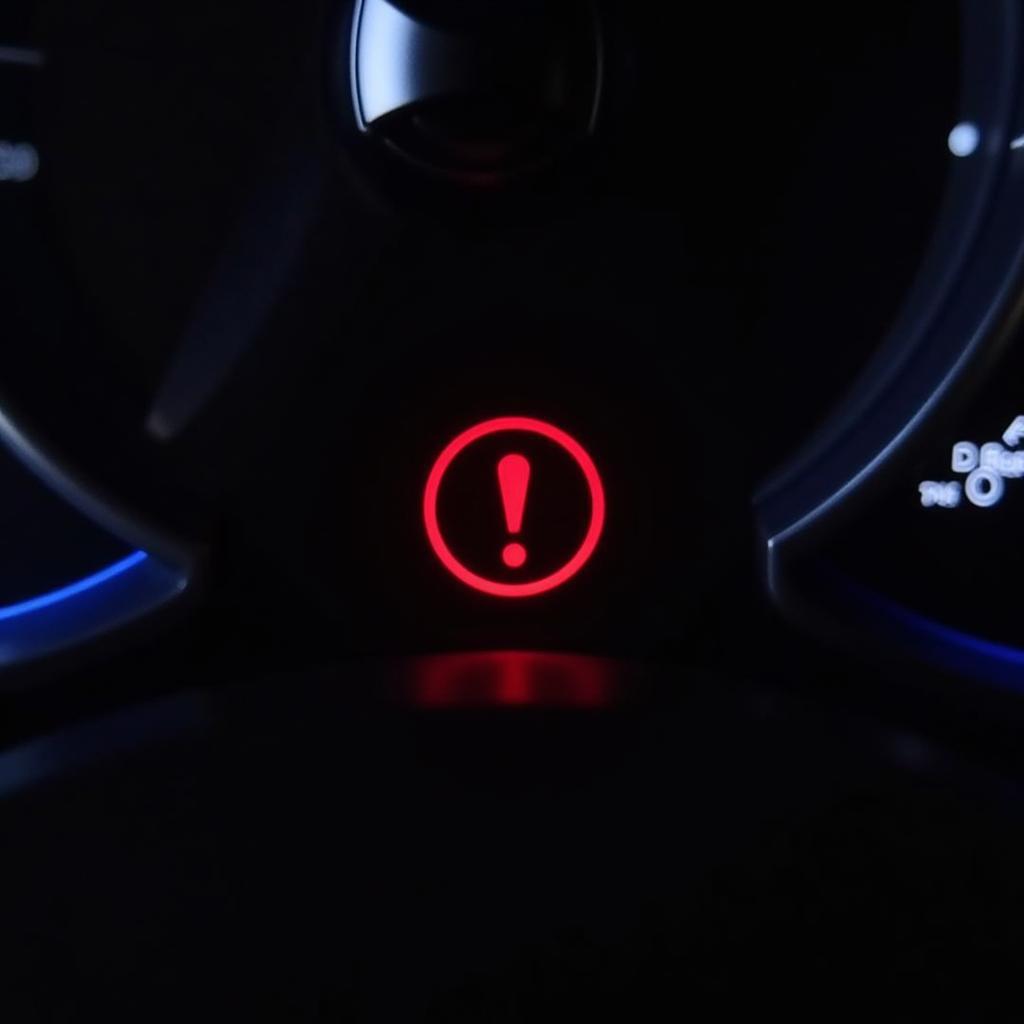The dreaded mini brake pad warning light has illuminated your dashboard, and you’re probably wondering, “How long can I drive for?” Don’t panic – this is a common concern. While this light is undoubtedly a call to action, it doesn’t necessarily mean your brakes are about to fail. This article will guide you through understanding the mini brake pad warning light, its implications, and how to proceed safely.
Understanding the Mini Brake Pad Warning Light
This small, often amber or red light on your dashboard is designed to alert you about your brake pad wear. Most vehicles utilize a sensor embedded within the brake pad material. As the brake pads wear down, this sensor eventually makes contact with the brake rotor, completing a circuit and triggering the warning light.
How Long Do You Have?
Unfortunately, there’s no one-size-fits-all answer to “how long do I have?” It depends on several factors:
- Driving Habits: Aggressive braking wears down pads faster than gentle braking.
- Vehicle Type: Heavier vehicles tend to wear down brake pads more quickly.
- Brake Pad Quality: High-quality brake pads generally last longer.
- Existing Wear: The light might come on with a fair amount of pad life left, or it could signal severely worn pads.
Expert Insight:
“As a rule of thumb, after seeing the brake pad warning light, it’s best to plan for a brake inspection within the next week or 1,000 miles, whichever comes first. However, if you hear grinding or scraping sounds, it indicates metal-on-metal contact, requiring immediate attention.” – John Miller, Senior Automotive Technician
What Happens If I Ignore the Warning Light?
Ignoring the warning can lead to:
- Reduced Braking Efficiency: Worn brake pads compromise your vehicle’s ability to stop effectively, increasing stopping distances and the risk of accidents.
- Damage to Rotors: Driving with worn pads can damage the brake rotors, leading to costly repairs.
- Complete Brake Failure: In extreme cases, ignoring the warning can lead to complete brake failure, posing a serious safety hazard.
What to Do When the Light Turns On
- Don’t Panic: The light itself doesn’t mean your brakes are gone; it’s a warning to schedule an inspection soon.
- Assess Your Driving: If you frequently brake hard or notice any changes in brake pedal feel (spongy, lower than usual), consider reducing driving and scheduling an immediate inspection.
- Schedule an Inspection: A qualified mechanic can assess the extent of the wear, advise on the remaining lifespan of your brake pads, and perform the necessary replacements if required.
Can Remote Diagnostics Help?
While remote diagnostics can be useful for many car problems, they are not as effective for brake pad wear. The warning light sensor indicates pad wear, but a visual inspection is necessary to determine the exact thickness remaining and overall brake system health.
brake pad warning light for 2002 vw beetle
Brake Pad Replacement: What to Expect
Replacing brake pads is a standard maintenance procedure. During a brake job, mechanics typically:
- Remove the wheels to access the brake calipers and pads.
- Inspect the brake system components, including rotors, calipers, and brake lines, for wear and damage.
- Compress the caliper pistons to accommodate new, thicker pads.
- Install the new brake pads and reassemble the braking system.
- Test drive the vehicle to ensure proper brake function.
yellow brake warning light priius
Preventive Measures for Longer Brake Pad Life
- Smooth Braking: Anticipate stops and apply the brakes gradually instead of slamming on them.
- Lighten the Load: Carrying excessive weight puts extra stress on your brakes.
- Regular Maintenance: Schedule routine brake inspections as part of your vehicle’s maintenance schedule.
2010 dodge grand caravan brake warning light
Conclusion
The mini brake pad warning light is a crucial safety feature, indicating the need for attention to your braking system. While the duration you can drive after the light illuminates varies, prompt inspection and timely replacement are essential. By understanding this warning system and following preventive measures, you can ensure optimal braking performance and maintain a safe driving experience. Remember, when it comes to brakes, erring on the side of caution is always the safest approach.
02 deville abs brake traction control warning lights
Frequently Asked Questions
1. Can I replace my brake pads myself?
While possible, it’s recommended to have a qualified mechanic replace brake pads. It requires specialized tools and knowledge to ensure proper installation and functionality.
2. How often should I get my brakes checked?
It’s advisable to have your brakes inspected at least once a year or every 12,000 miles, or as recommended in your vehicle’s owner’s manual.
3. Why are my new brake pads squeaking?
New brake pads can sometimes squeak due to factors like glazing (a thin layer of material on the pad surface) or dust. If the noise persists, consult a mechanic.
4. Does the warning light mean I need to replace rotors too?
Not necessarily. However, worn pads often contribute to rotor wear. A mechanic can assess the rotor condition and advise if replacement is necessary.
5. Can driving habits really affect brake pad life?
Absolutely. Aggressive braking generates more heat and friction, leading to faster wear. Smooth, anticipatory braking significantly extends pad life.

